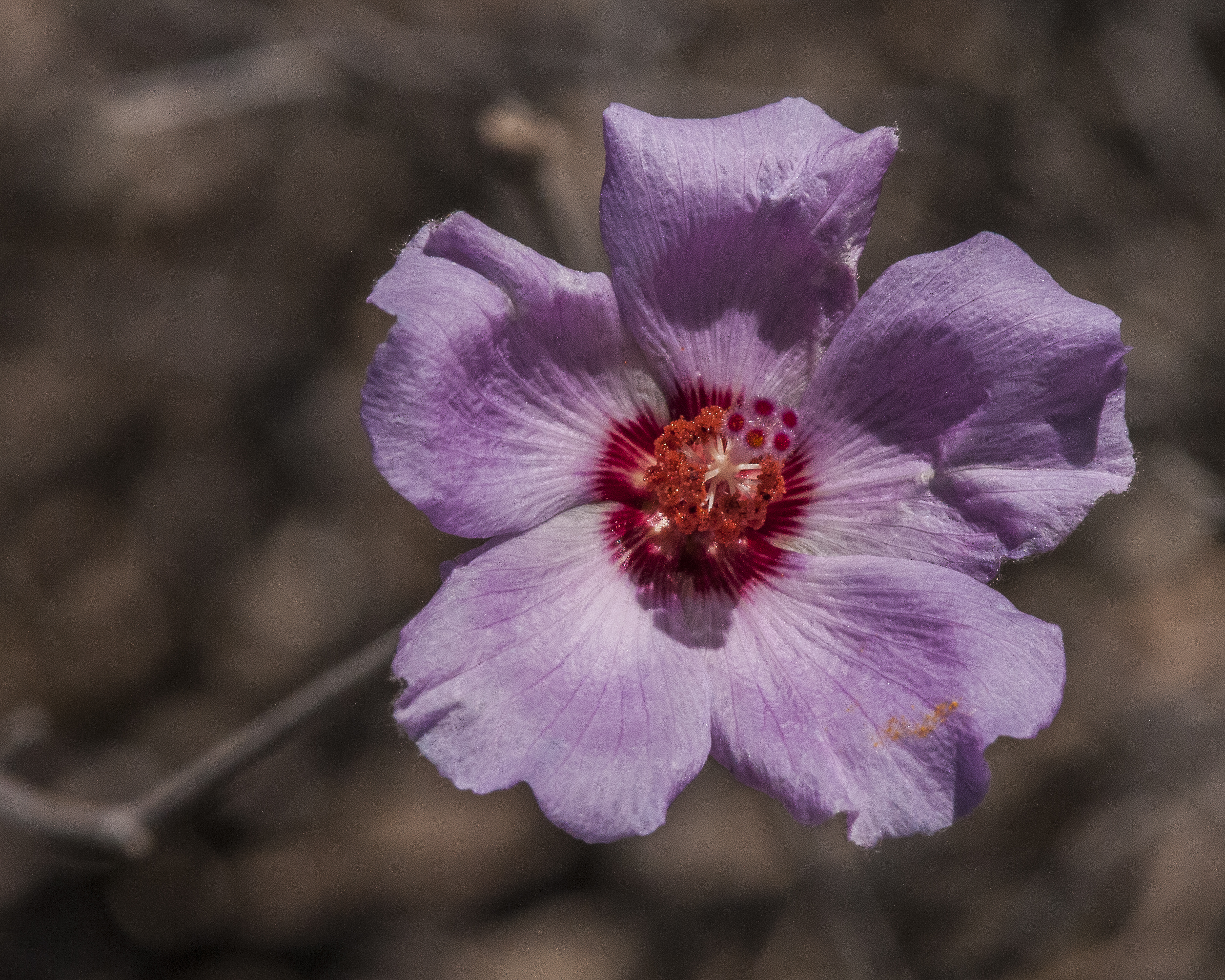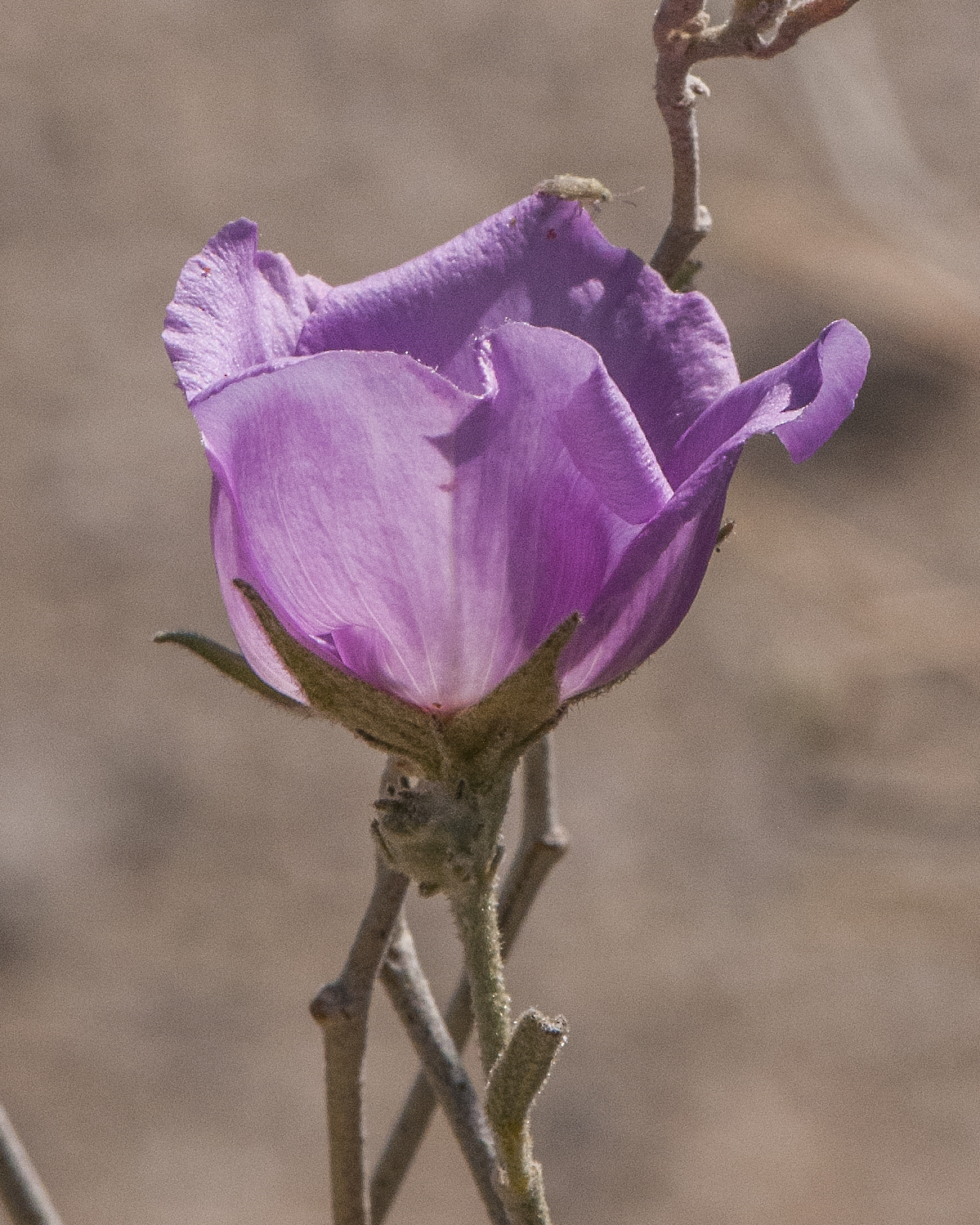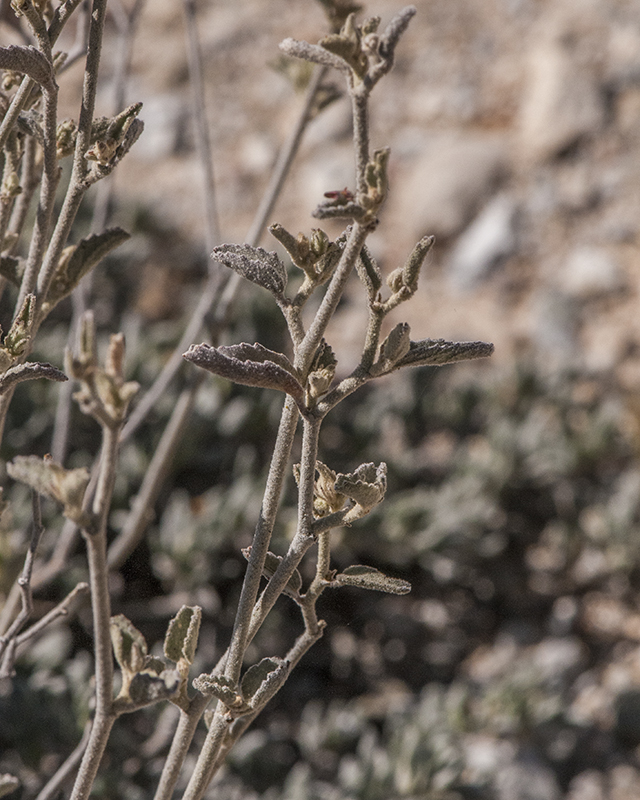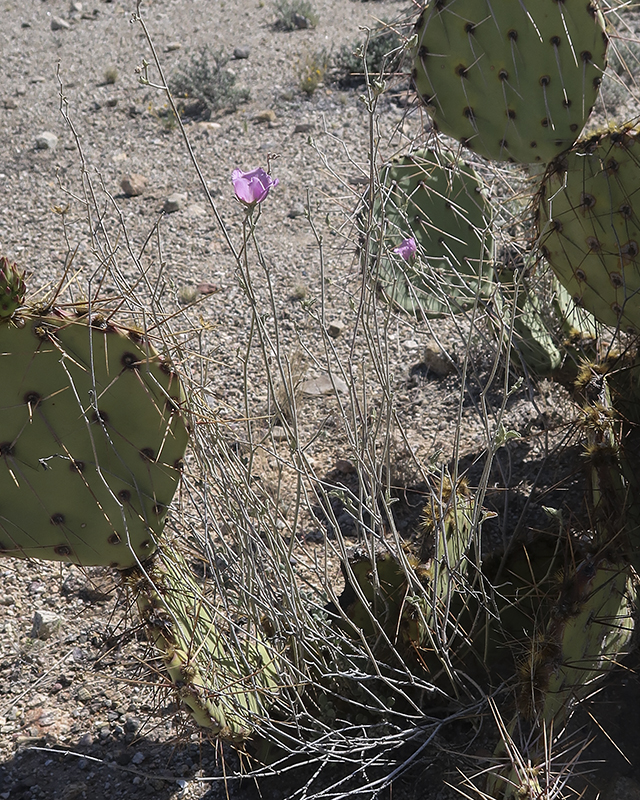Wildflowers of Southern Arizona
Paleface.
Hibiscus denudatus.
Mallow (Malvaceae) family.
Duration: Perennial. Nativity: Native. Lifeform: Subshrub. General: Shrubs from 0.5-1 m, grayish-green pubescent stems with stellate hairs branching from the base. Leaves: Alternate, broadly ovate to obovate, 1.5-3 cm long, leaf margins entire to dentate, veins prominent beneath, densely tomentose. Flowers: Short pedicellate, calyx 11-15 cm long, petals whitish-pink to purple, yellow with maroon spot near the base, 2-2.5 cm long. Fruits: Globose capsule with seeds covered with long silky hairs, 7-8 mm long. Ecology: Found on rocky or gravelly slopes, bajadas, and washes below 3,500 ft (1067 m), flowers in spring. Distribution: Ranges across central and southern Arizona, from California to Texas and south to Durango and onto Baja California. Notes: Distinguished by the being an ascending gray-bluish-green perennial herb or subshrub with many branching stems from the base with stellate hairs; ovate or obovate, toothed, densely long-hairy leaves; and especially the showy lavender flowers with dark red centers, red stigmas and the capsules full of hairy seeds. Ethnobotany: Specific use of species unknown, but uses for the genus include infusion of roots taken to purify the blood, buds and flowers chewed as a laxative, and leaves, stems, buds, and seeds chewed as a general strengthener. Etymology: Hibiscus is from the ancient Greek and Latin name for a mallow-like plant that is derived from Ibis, an Egyptian diety, denudatus means naked, denuded.
Rincon Mountains
Saguaro National Park East.
Location: Loma Alta Trailhead.
4/15/17
See SEINet Pictures and Description
See FireFly Forest Pictures and Description





